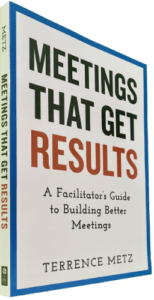Alex Osborn, the driving force behind the concept of ‘brainstorming,’ shared a timeless message with public relations professionals in 1948 that remains just as relevant today. His message is especially pertinent now: while facts and scientific research can clarify public issues, evidence alone ‘cannot find solutions unless populated by new ideas.’[1] These ideas often emerge through public relations innovation.
Now, consider the democratic virtues of service, learning, and community building,[2] as outlined by Brian Aull, Ph.D., a professor at MIT. Public relations professionals have a unique opportunity to add significant value to these virtues, particularly in strengthening service and fostering community building within a democratic framework. narrow your scope of understanding to democratic virtues.
Innovating Public Relations to Enhance the Service of Others

Public Relations Innovation
Emotional understanding often holds more weight than intellectual understanding in typical community decision-making processes. As President Lincoln once observed,
“If you would win a man to your cause, first you convince him that you are his friend.”[3]
People don’t change their behavior based purely on facts, but on how those facts resonate with their personal experiences. For instance, most individuals aren’t truly afraid of heights—they’re afraid of falling, or more specifically, the impact of landing.
The greatest barrier to social progress is complacency. People resist change because they fear losing the things they’re attached to. Public relations professionals and other change agents can address this by emphasizing how old attachments can coexist with new ones, rather than framing the past and future as mutually exclusive. Integral thought, not separatism, becomes critical.
PR professionals should aim to simplify complex concepts for the public. Economic information often fails to resonate with the average person due to its complexity. Infusing more creativity and imagination into communication strategies could prevent the use of ineffective, uninspiring techniques. For instance, many organizational mission statements sound alike and fail to captivate or engage their audience. Seek the passion when you want to make an impact. Elmer Wheeler, a friend of Osborn’s developed the expression, “Sell the sizzle, not the steak.”
Community Building Requires Public Relations Innovation
Locally, many municipal challenges demand better solutions, including waste disposal, water access, and traffic safety. What often captivates the public, however, is unusual and unexpected behavior:
“. . . Buffalo safety authorities have dramatized the virtue of good driving. Instead of handing out summons, the police have been handing out flowers. On one evening, patrolmen William Collins and James Kelly ordered 25 drivers to the curb, then complimented them on their careful driving and handed them fresh orchids.”[4]
Internationally, how would one ‘sell’ America to the rest of the world? An overabundance of caution often stifles new ideas, yet innovation is desperately in need of a sponsor—particularly in regions like the Middle East. It is more ideas, not fewer, that will drive real impact. While this article does not explore ‘ideological weapons,’ it’s safe to say that greater imagination could hardly be less effective than many past efforts.
Since it’s unlikely that the federal government will establish a team of creative thinkers within the State Department, perhaps the professional PR community can step in as a transparent and effective surrogate. With Osborn’s encouragement:
“Maybe such a brainstorming group is a bit far-fetched; but, surely, we need somehow to put more creative power into our international salesmanship. We need more boldness. We need to look up to, not down on, audacity in ideas—just as we look up to audacity in armed conflict . . . If the armed forces need a General Staff to create our military strategies, don’t we need a creative group to pan our peace strategies?”[5] (italics are from the original author and source)
Who is better suited to think creatively about international strategies than the professional PR community?
Greater Public Relations Innovation Leads to Higher Quality Decisions
Recall the principles of The Wisdom of Crowds[6] and the logic behind it: groups are capable of generating more ideas collectively than the sum of their individual contributions. One person’s thought can spark an idea in someone else, leading to insights that might not have surfaced independently. This dynamic, often referred to as a ‘chain reaction,’ shows that both groups and individuals make higher-quality decisions when presented with a wider range of options.
When addressing national problems, it’s not necessarily the smartest individuals we need, but the most creative minds. So, what are some simple strategies to fuel the funnel of imagination and foster consensual ownership and shared responsibility for actions and next steps?
Use Specific, Detailed Questions to Spark Greater Idea Generation
More ideas foster solutions, especially when fighting problems proves ineffective—as it often does. Viable options emerge when they offer more attractive alternatives.
Asking the right questions accelerates the development of the best ideas. Broad, unanswerable questions like ‘How do you solve global hunger?’ won’t lead to actionable solutions. In contrast, more focused questions, such as ‘How can we improve food storage capacity in Somalia?’ can spark ideas that contribute to a larger solution.
In the world of processes, we might think of a simple equation like Y = f(X + X + x + x), where ‘Y’ is the outcome and ‘X’ and ‘x’ represent variables that contribute to it. To generate more ideas, it’s essential to focus on asking questions about the large ‘X’ or small ‘x’—the components of the process—rather than directly asking about the ‘Y,’ or the outcome itself. For example, instead of asking, ‘What is the marketing plan?’ it’s more productive to explore specific areas like segmentation, targeting, or positioning.
Some types of questions that inspire more detailed thinking—and that PR professionals might consider—include:
- Any unsuspected facts that can be brought to light? (Look at the opposite, reversal, and vice versa)
- How can the message or delivery be modified? (altered, changed, motion, sound)
- How can the seemingly disparate be combined? (combination, correlation, or synthesis)
- Laws of association that might include questions about:
- Contiguity or nearness,
- Contrast
- Similarity
- The query method suggests primary elementary school learning; namely:
- Why (important, necessary, or beneficial)
- Where (could, should, does) it occurs
- When should it occur
- Who (could, should, does) it
- What (could, should, does) need to occur
- How (could, should, does) it get accomplished or completed
- What can be borrowed or adapted to our needs? (illumination, inspiration, parallels)
- Where can we substitute? Or, rearrange? (interoperability, placement, sequence, surrogates, timing, transposition)
- What should be added, multiplied, or magnified? (dimensions, exaggeration, frequency)
- What should be subtracted, divided, or minified? (dimensions, exaggeration, frequency, understatement)
More Ideas, Less Judgment: Fueling Public Relations Innovation
More ideas are always better, so focus on capturing them without judgment or immediate discussion. This article isn’t about how to analyze ideas, but rather about the importance of capturing them first and analyzing them later.
Historically, early American settlers exhibited tremendous ingenuity—or faced the risk of starvation. Similarly, cultures that foster and inspire the most imagination will be the ones that thrive. The PR community can play a key role in driving that ingenuity by showcasing creativity and imagination, setting an example for the rest of the world. Encouraging creativity may not always be easy or natural, but remember: ‘only hard religions succeed.’[7] Similarly, generating imaginative ideas also requires perseverance and dedication.
[1] Osborn, Alex, “Your Creative Power—How to Use Imagination”, Charles Scribner’s Sons, New York, 1948, pg 308.
[2] Aull, Brian, “The Triad—Three Civic Virtues That Could Save American Democracy”, Amazon Digital Services LLC, 4th ed 2017, Preface.
[3] Osborn, pg 295.
[4] Ibid, pg 311.
[5] Ibid, pg 317.
[6] Surowiecki, James, “The Wisdom of Crowds”, Doubleday, New York, 2004.
[7] Dawson, W.J., “The Autobiography of a Mind”, Century Company, New York, 1925, pg 41.
______
Don’t ruin your career by hosting bad meetings. Sign up for a workshop or send this to someone who should. MGRUSH workshops focus on meeting design and practice. Each person practices tools, methods, and activities daily during the week. Therefore, while some call this immersion, we call it the road to building high-value facilitation skills.
Our workshops also provide a superb way to earn up to 40 SEUs from the Scrum Alliance, 40 CDUs from IIBA, 40 Continuous Learning Points (CLPs) based on Federal Acquisition Certification Continuous Professional Learning Requirements using Training and Education activities, 40 Professional Development Units (PDUs) from SAVE International, as well as 4.0 CEUs for other professions. (See workshop and Reference Manual descriptions for details.)
Want a free 10-minute break timer? Sign up for our once-monthly newsletter HERE and receive a free timer along with four other of our favorite facilitation tools.
______
With Bookmarks no longer a feature in WordPress, we need to append the following for your benefit and reference
- 20 Prioritization Techniques = https://foldingburritos.com/product-prioritization-techniques/
- Creativity Techniques = https://www.mycoted.com/Category:Creativity_Techniques
- Facilitation Training Calendar = https://mgrush.com/public-facilitation-training-calendar/
- Liberating Structures = http://www.liberatingstructures.com/ls-menu
- Management Methods = https://www.valuebasedmanagement.net
- Newseum = https://www.freedomforum.org/todaysfrontpages/
- People Search = https://pudding.cool/2019/05/people-map/
- Project Gutenberg = http://www.gutenberg.org/wiki/Main_Page
- Scrum Events Agendas = https://mgrush.com/blog/scrum-facilitation/
- Speed test = https://www.speedtest.net/result/8715401342
- Teleconference call = https://youtu.be/DYu_bGbZiiQ
- The Size of Space = https://neal.fun/size-of-space/
- Thiagi/ 400 ready-to-use training games = http://thiagi.net/archive/www/games.html
- Visualization methods = http://www.visual-literacy.org/periodic_table/periodic_table.html#

Terrence Metz, president of MG RUSH Facilitation Training, was just 22-years-old and working as a Sales Engineer at Honeywell when he recognized a widespread problem—most meetings were ineffective and poorly led, wasting both time and company resources. However, he also observed meetings that worked. What set them apart? A well-prepared leader who structured the session to ensure participants contributed meaningfully and achieved clear outcomes.
Throughout his career, Metz, who earned an MBA from Kellogg (Northwestern University) experienced and also trained in various facilitation techniques. In 2004, he purchased MG RUSH where he shifted his focus toward improving established meeting designs and building a curriculum that would teach others how to lead, facilitate, and structure meetings that drive results. His expertise in training world-class facilitators led to the 2020 publication of Meetings That Get Results: A Guide to Building Better Meetings, a comprehensive resource on effectively building consensus.
Grounded in the principle that “nobody is smarter than everybody,” the book details the why, what, and how of building consensus when making decisions, planning, and solving problems. Along with a Participant’s Guide and supplemental workshops, it supports learning from foundational awareness to professional certification.
Metz’s first book, Change or Die: A Business Process Improvement Manual, tackled the challenges of process optimization. His upcoming book, Catalyst: Facilitating Innovation, focuses on meetings and workshops that don’t simply end when time runs out but conclude with actionable next steps and clear assignments—ensuring progress beyond discussions and ideas.



